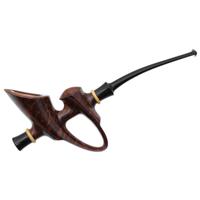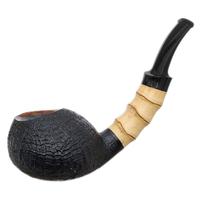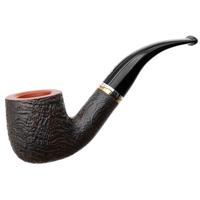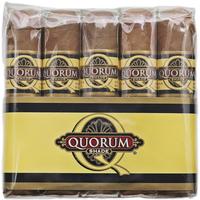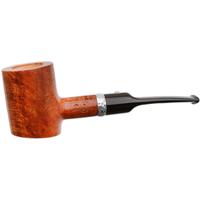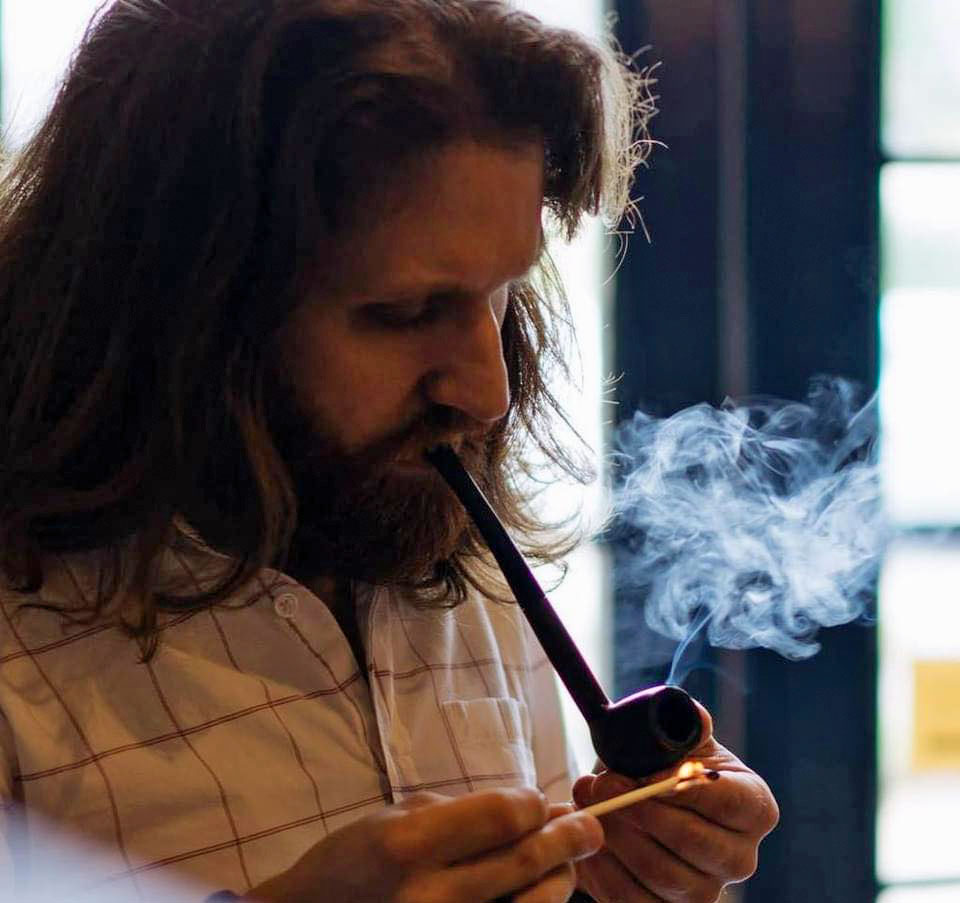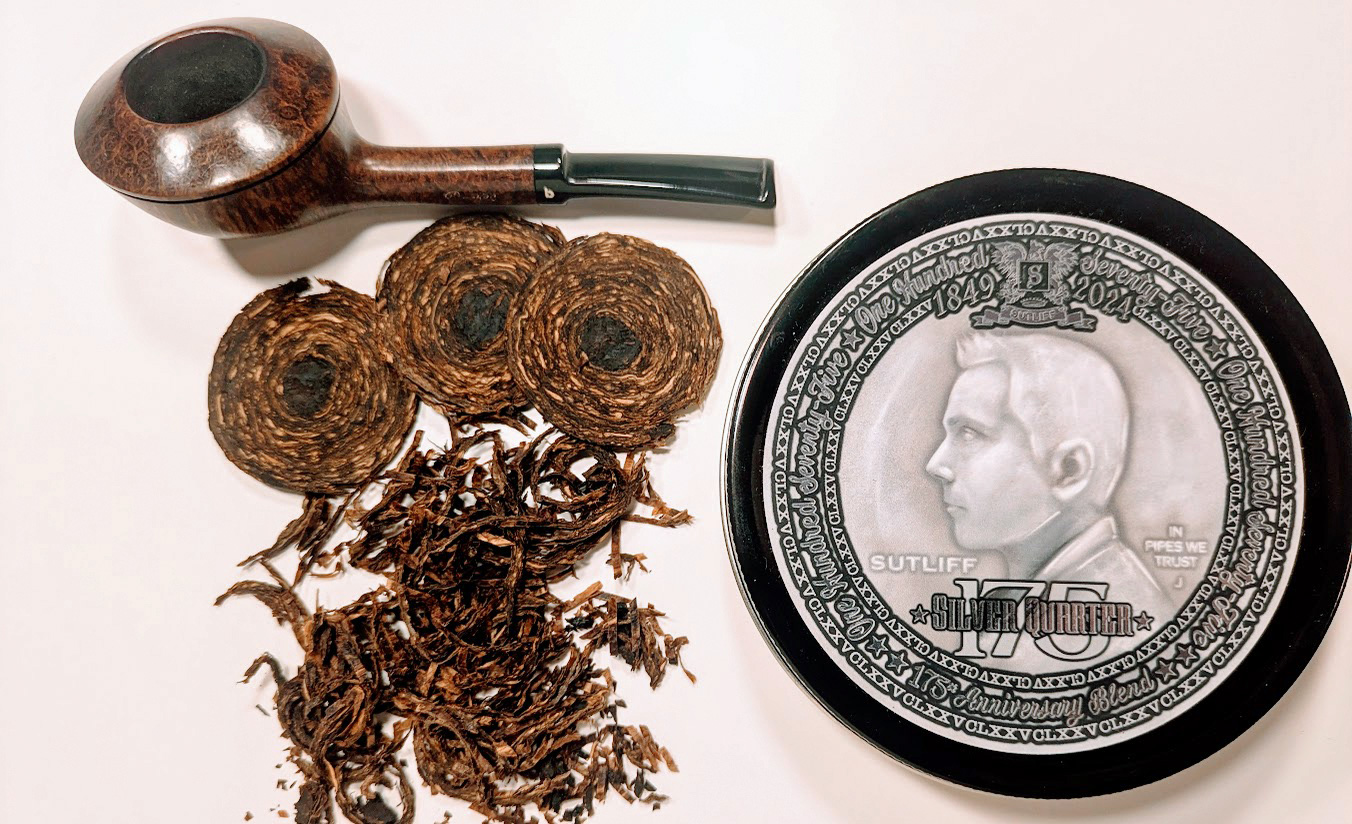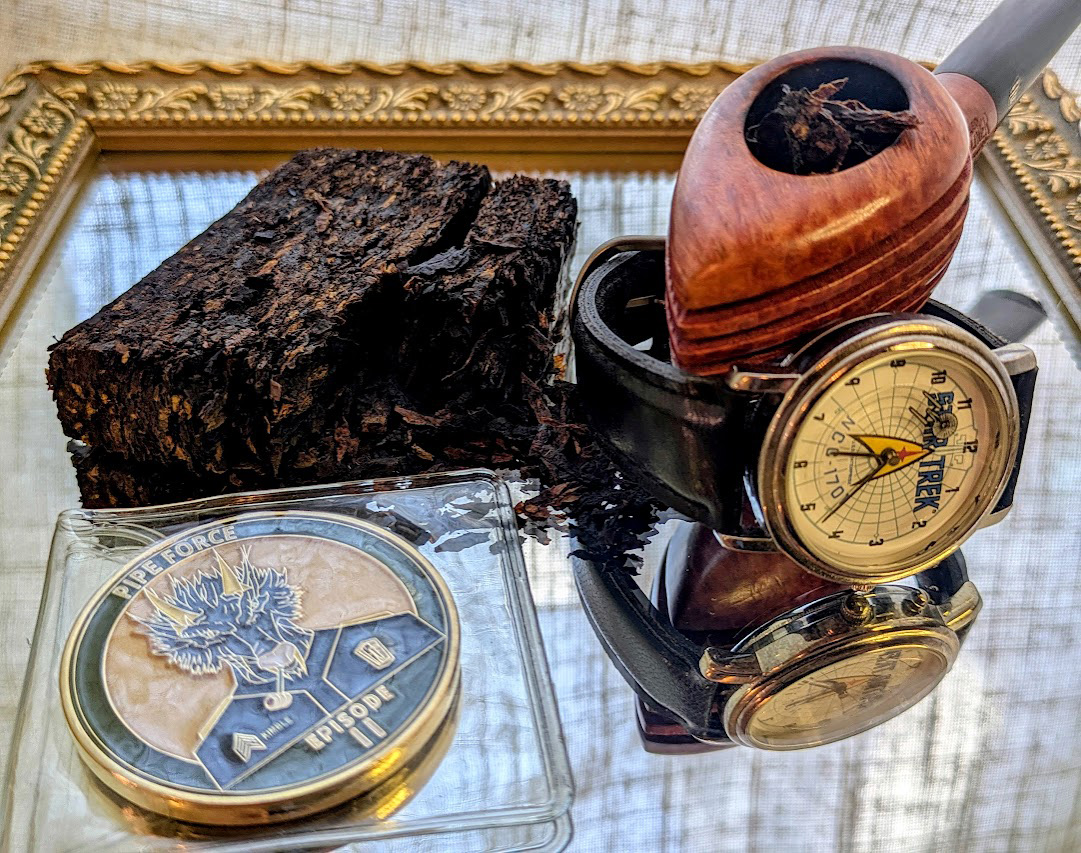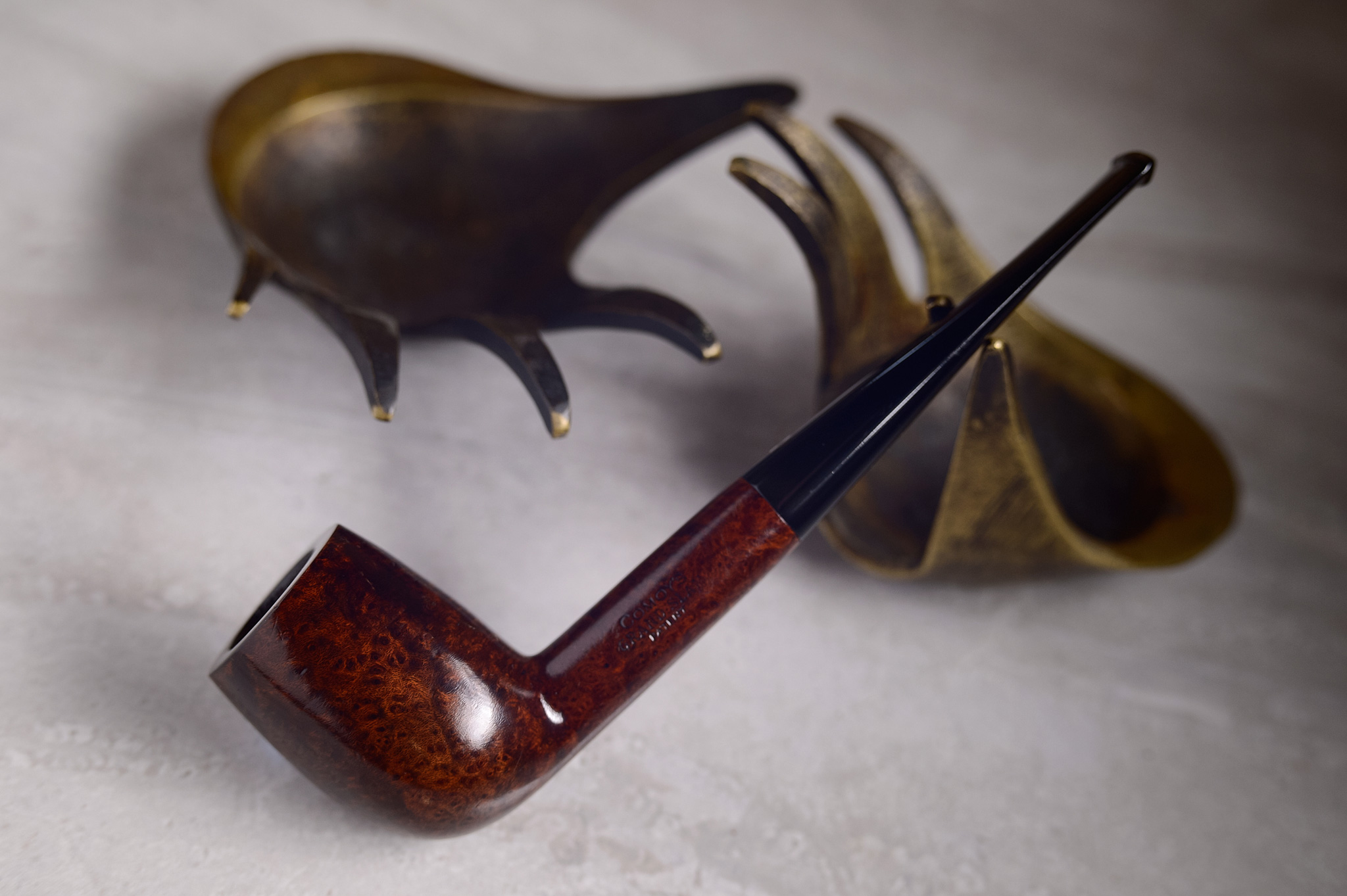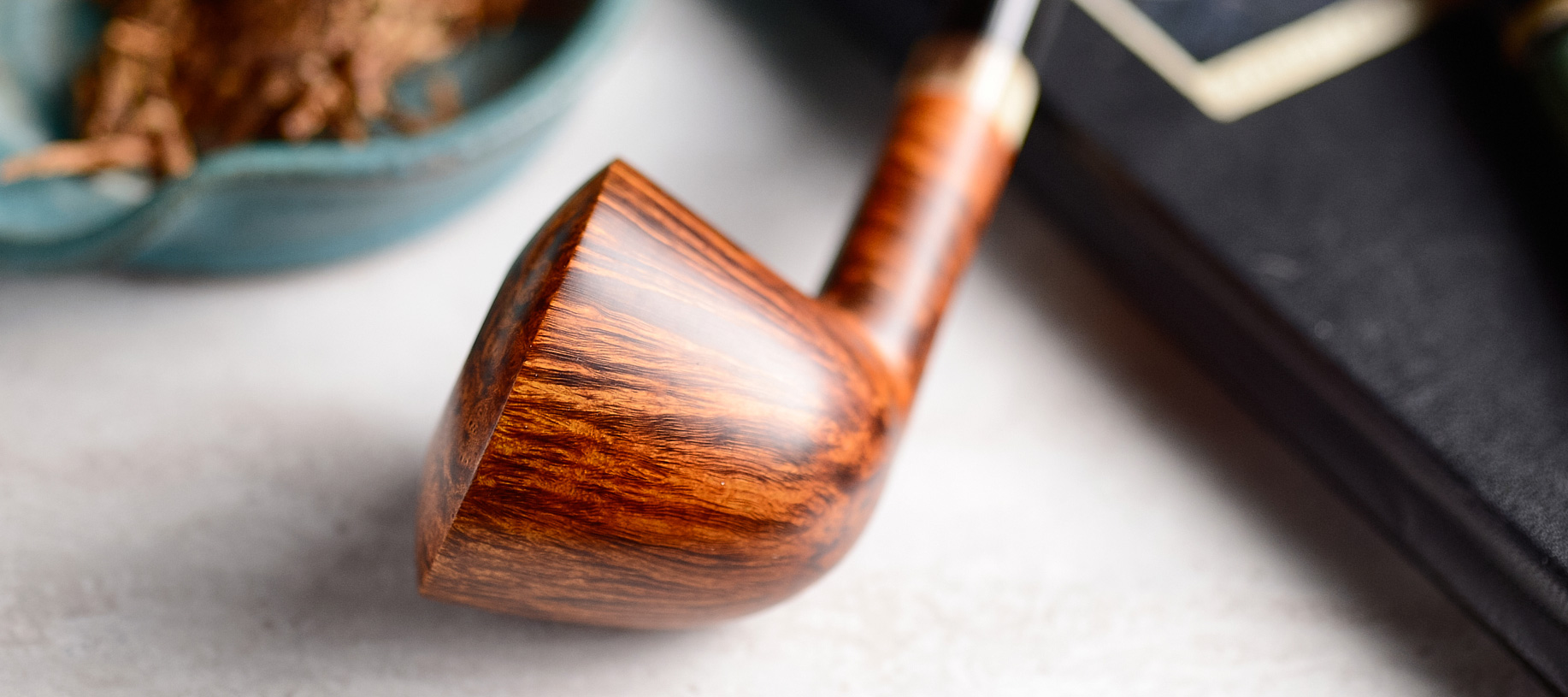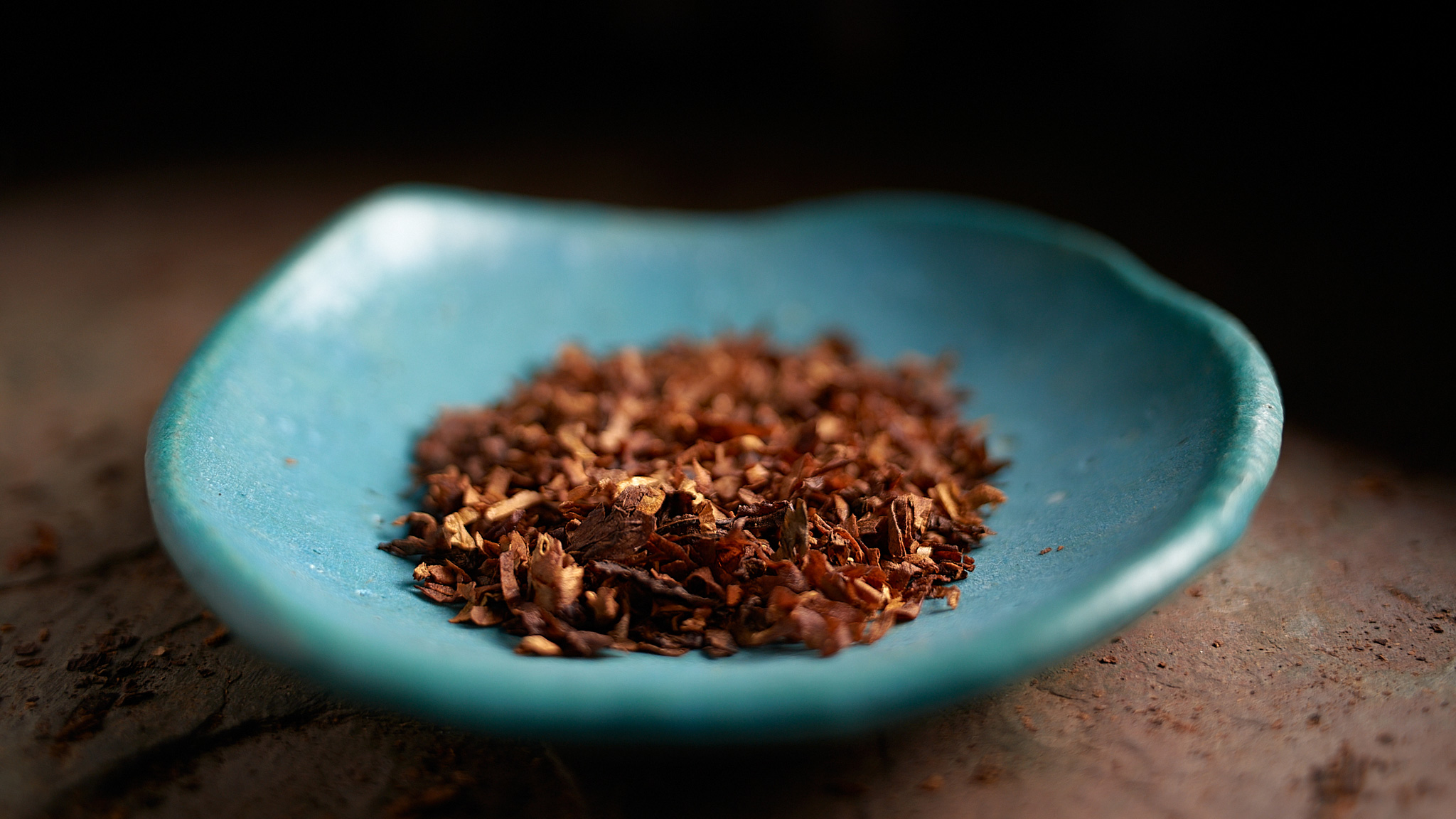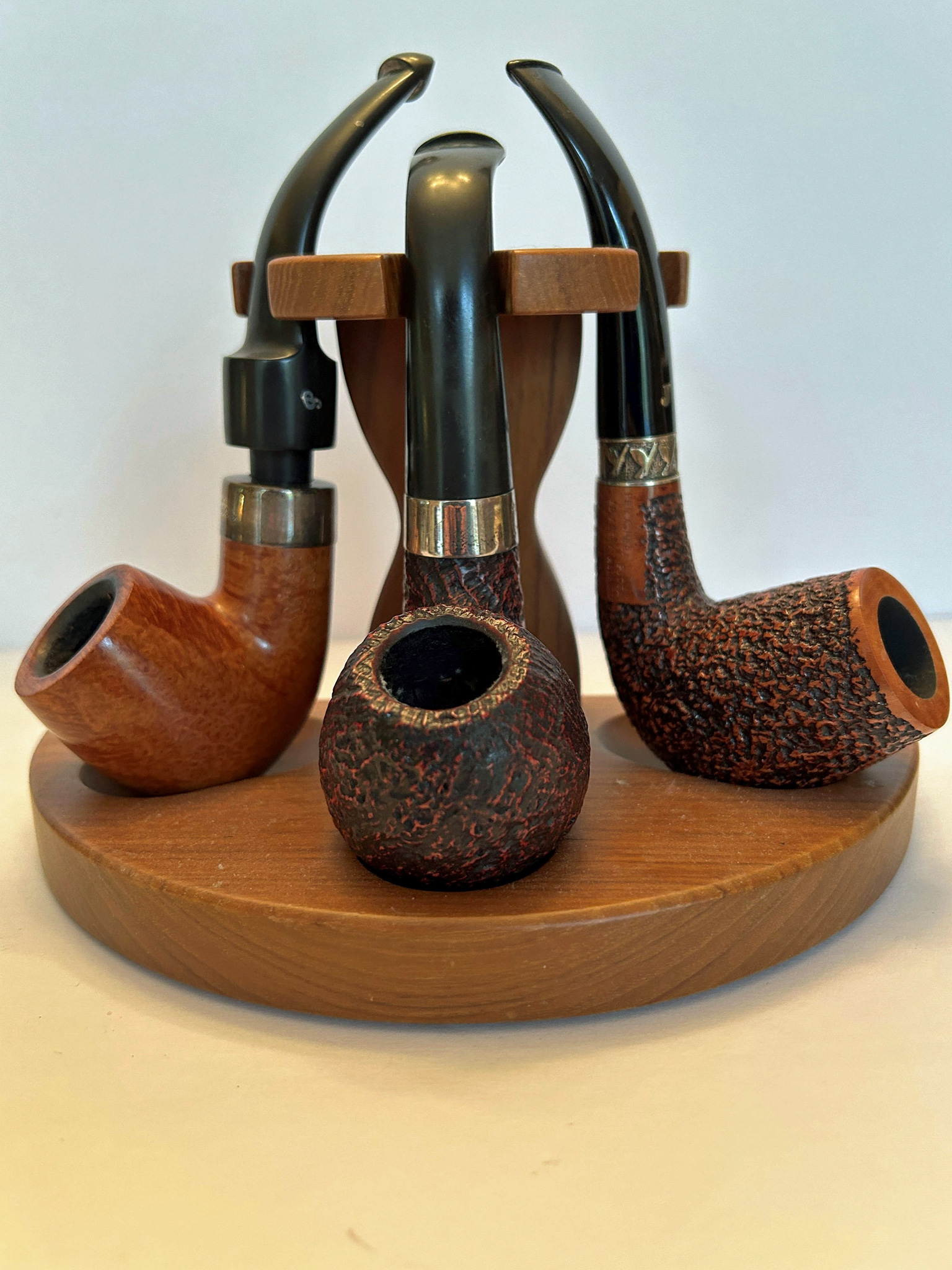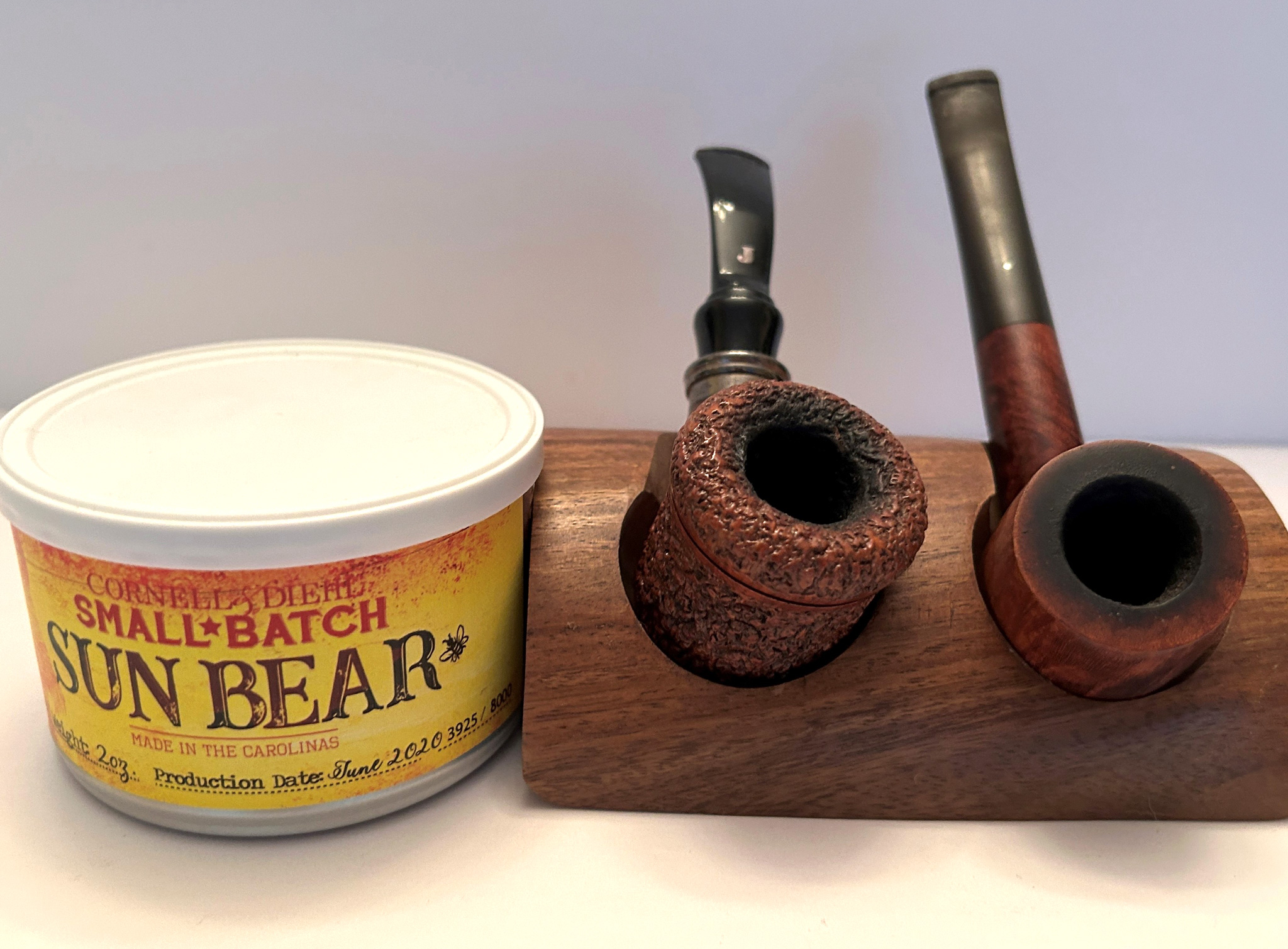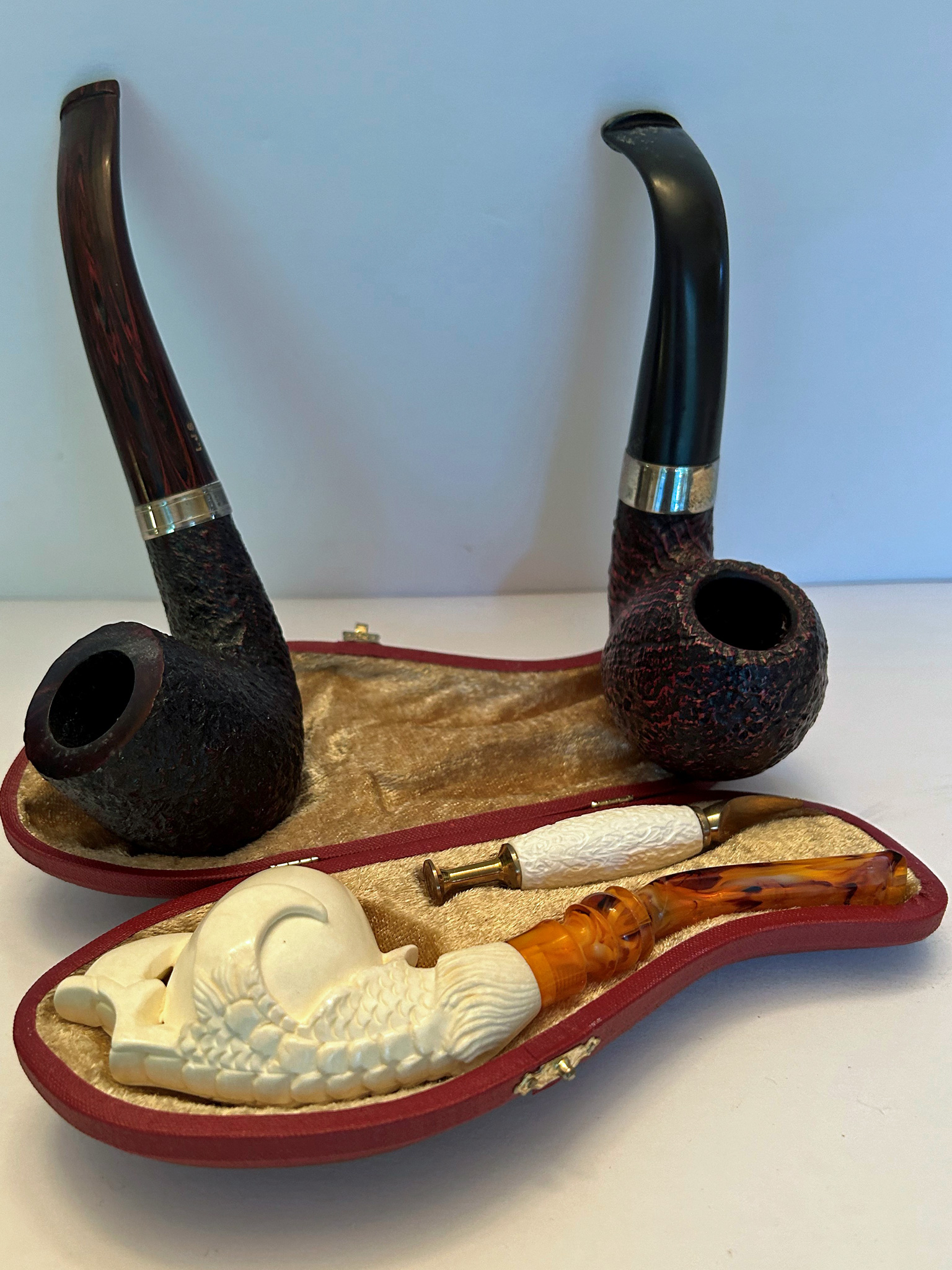Radio Talk Show
- Pipes Magazine Radio Show Episode 635
Welcome to The Pipes Magazine Radio Show Episode 635. Our featured interview on tonight’s show is with James Ravenwood. James is the boutique tobacco blender of Ravenwood Blends. His blending started out as a fun hobby, and he now has professionally packaged commercially available products with some great tin art. Part of his interest in pipe smoking goes back to fond memories of a retired Navy Veteran that lived on his street while he was growing up that would sit in his driveway smoking a pipe all day. Later, in 2011 he began smoking pipes and soon after started experimenting with mixing different tobaccos. His other hobby, that he has been doing for 30 years, is photography. He takes wonderful photos of outdoor spaces, and still life pictures of pipes and tobacco. You can see them on his Instagram @thebriarfellowship. At the top of the show we’ll have an Ask the Pipemaker segment with renowned pipe artisan Jeff Gracik.
- Pipes Magazine Radio Show Episode 634
Welcome to The Pipes Magazine Radio Show Episode 634! Our featured interview on tonight’s show is with Warren Ertle. Warren is an extremely accomplished musician with a PhD in music. He started early as a percussionist in sixth grade. Later his grandmother got him a cheap Casio keyboard which he taught himself to play. He started playing in blues bands in high school, and has been a pianist with jazz big bands for years. Even though he was already a professional musician, he took his first real piano lesson when he enrolled in college with his studies in classical music. He is of course a pipe smoker. At the top of the show we will have an Ask the Tobacco Blender segment with Jeremy Reeves. Jeremy is the Head Blender at Cornell & Diehl, which is one of the most popular boutique pipe tobacco companies in the USA.
- Pipes Magazine Radio Show Episode 633
Welcome to The Pipes Magazine Radio Show Episode 633. Our featured guest tonight is Jon David Cole. JD is the Owner/Tobacconist at The Country Squire in Jackson, MS, and the accompanying online store. We’ll have JD and Brian talking about what’s new at the store and in the business in general. At the top of the show, Brian will discuss tobacco growing, what happens to the leaf, and provide updated information on where tobacco is being gown today. Tobacco production originated in the United States and we were once the #1 producer. It’s quite different now.
Tobacco Reviews
- Sutliffe Silver Quarter + Maple Shadows II Reviews
Well there’s nothing like a touch of the plague to usher in the changing season. Leaving the airport just when the first advertisements for all things pumpkin spice began to appear—lattes, muffins, shampoos, trash bags, and myriad other concoctions—so, too, my ability to breathe freely disappeared. The unfortunate side effect of losing one’s sense of taste and smell for weeks is the utter inability to enjoy tobacco. Not that I consider myself an expert on anything but my own tastes, but be forewarned that this review was made with mildly impugned sensory equipment. Just when a comforting pipe was most needed, its comfort was denied. Be that as it may, the road to recovery found me limping along on one lung this past month, trying to wrest the particulars of two blends on offer from Sutliff: the latest 175th Anniversary blend, Silver Quarter, as well as their spooky seasonal Maple Shadows II. Silver Quarter is a new style on offer from Sutliff, their first coin-cut blend. Naturally a Virginia-Perique, it is enhanced with a traditional core of black Cavendish. In the tin it holds much promise, with a lightly bready and very woody, if ever-so-slightly sour, aroma. After some time acclimating to air, the bouquet softens further and offers hints of the burley with some chocolaty notes wafting through the more dominant dry grassy aspect. The tin art is of a coin-style bas-relief bust, presumably of a founding Sutliff brother, à la The Old Boss On the reverse of the tin we find the blend’s description: Reflecting on Sutliffs 175 years of tobacco excellence, we came across a brand that embodies true value, SILVER QUARTER. This name pays homage to Sutliffs roots, the legacy of two brothers who popularized pipe smoking in the burgeoning mining society of San Francisco. We celebrate this heritage with a coin cut composed of the finest African Virginias, complemented by a core of Perique and Black Cavendish. The tin notes are, forgive the pun, on the nose for a good VaPer blend: mild tart sweetness peeking out from behind dried hay and slight chocolate undertones, with a lightly tannic finish of weathered oak. It is always a joy to prepare a coin cut, my preference being to put a few in my palm and vigorously warm my hands together to fully break them apart. These well-formed discs pack and light easily, and smoke with little prodding to the end of the bowl. For technical points it scores well—it smokes light, and it’s easy to tend the ember. While it gets sharp after a few quick bowls, pacing should be heeded to easily smoke down to the heel without inviting bite. Of the flavor, though, I am left a bit wanting. There are tart and high notes aplenty, but very little of the lemony citrus I would anticipate, as well as scant midtones; they tend more toward the red wine-vinegary and sour. The flavors are muted, also, lacking the sweetness and piquancy of other marques—the small measure of Perique tickles the nose now and again with peppery hints, and there is a smidge of a deeper sweetness to be found in the Cavendish from puff to puff, but overall it lacks some dynamism. The Virginias, to my palate, come off a bit on the dry side, and here they dominate the blend. The aftertaste and mouthfeel are neutral, again evincing more of the dry, woody, tartly tannic end of the spectrum. The blend has plenty of polish, but not enough depth or richness (*yet) to make it a standout. Here, comparisons are inevitable: Luxury Bullseye Flake has more sweetness, both from its Virginia as well as its Cavendish, and a better finish; Davidoff is similar but with a pronounced umami that is absent here; as for Escudo, I haven’t had any fresh tins lately so it would be unfair to compare. While it rates as a solid, fairly mild smoke, particularly to lovers of the genre, it does not surprise with any exceptional flavors. To be fair, all the boxes have been checked for the blend to benefit from some real aging, and it would be worth checking in on this after a couple of years sealed away. I’ve set half my tin aside to sample again in a month or two, in case I’m merely suffering from the lingering effects of parosmia, and will amend this review in that case. Maple Shadows II, on the other hand, made up for the weeks of sniffling and sneezing I’d endured. Offered in a full 8 ounce tin with delightfully spooky Halloween art, it’s (hopefully) enough to last through the season. Somehow I had missed this last year, so it’s a real pleasure to get some in my candy bucket this year. As the chilling winds of autumn draw eerie prattle from contorted, deciduous limbs, we find ourselves possessed by the spirit of the season. Bewitched by a dissonant charm, we’ve created Maple Shadows. In a season that is defined by the unlikely harmony of treats and frights, we’ve joined the enchanting sweetness of maple with the earthy spice of Dark Fired Kentucky for a smoking experience that captures the senses with an otherworldly fusion of flavor. This may be the best aromatic blend Sutliff’s ever made—and they make a ton of them. First off, it’s not overbearing in the least—quite the opposite, it is also one of the more restrained aromatics they’ve ever made, with a clear but very light topping that melds oh-so-well with their choice Kentucky added to the mix. Opening the tin, the sweet maple is up front and center, but so too is the must of fallen leaves, bready pie crusts, and a crackling fire in the hearth—a perfect invocation of Herbstdüfte in a can. Packing best in an open and capacious bowl, the flavoring is subtle, and recedes to the background while puffing. With a sweet coffee or tea to accompany, the aftertaste of the maple is reinvigorated on the palate […]
- Pipe Force Episode II & Hogshead Bourbon Barrel Aged Reviews
We’re in the dog days of summer, and in the heat and humidity I find my palate tends to become as erratic as the extreme weather. To be more precise, my entire biochemistry is busily making the continual adjustments that keep this finely-tuned machine old jalopy of a body in top form hobbling along, and my taste buds are a good indicator that the system is preoccupied with regulating itself. Therefore it’s no surprise that McCranie’s Roanoke, the tobacco that I’d been favoring since the winter months and regularly returning to between other review blends, just wasn’t hitting the spot anymore. We live in fortunate times that present no shortage of novel and interesting blends to try, so some speculation toward new flavors is in order. This month’s spotlight will thus fall on a couple of summer sequels, of a sort: first, the latest installment of Per Jensen’s Pipe Force line, Episode II to be exact; second, a new incarnation of Seattle Pipe Club’s Hogshead, this time with a bourbon barrel-aged twist. Much like The Empire Strikes Back improved on the previous film in that series, Episode II is a generational improvement on the English profile offered in Episode I. To my personal taste, while I enjoyed Episode I quite a bit, it didn’t have a definable hook for me; this iteration of a similar ingredient list hits much closer to the mark. Here again it is a Latakia-forward mixture presented with Katerini concoctions and stoved tobaccos, but with more variety and, for my money, more interest. From the tin: A mellow, sweet mixture of Bright, Red, and Stoved Virginia offers the exceptional base for smokey Latakia, floral Kentucky, spice of Stoved Katerini and the ambrosial berry and spice of Katerini Perique. The result is a harmony of flavor in perfect balance. The bouquet in the tin is tart, heathery, and leathery, in equal proportion. The aroma is dry and smoky with clear clay overtones and, as advertised, faint berry notes from the tin. In the bowl the sweetness sneaks in immediately, displaying a wonderful synergy between the Katerini Perique (Periquini? Katerique?) and the Virginias, offering a flavor unique and quite apart from the usual raisiny range commonly found in Virginia / Perique meldings. Conversely, the Latakia’s smoky, burning-rubber character is also influenced by the Katerini, directing it toward a very pinyon-esque range of aroma that lingers distinctly the room note afterward. Speaking of room note, it can become rather tart after repeated bowls—advise any expected visitors that no, there isn’t a diesel fire in your house, you’re just savoring your time with a new blend. It’s offered as a tight 50g crumble cake, easily broken apart for preparation. As if it needed any more curb appeal, every 10th tin of the series includes a challenge coin featuring the tin’s artwork inside, and this was a lucky tin. It’s a great way to have fun with the series, makes a great addition to the random tchotchkes adorning one’s desk, and serves as a very tactile fidget toy that doubles as a brand reminder—is it time to stock up again? In my testing it seemed at its best in a wider, shallower bowl; the ember was easier to tend, breath pacing allowed a fuller flavor, and it didn’t veer too strongly to the tarry tones that Lat can have. Of the flavors there were many—often varying from bowl to bowl, and very dependent on accompanying beverage or previous meal, it seems. It’s an unfocused blend, but not to its detriment in this regard; it had a very consistent overall tone, with each bowl eliciting some new and interesting flavor moments—my notes are all over the spectrum, with observations like popcorn, maple bacon, charred cardboard, the aforementioned diesel fumes, burnt beef ends, dried silage, musky oak, swamp water (peaty!), and dried vodka. Appreciably, those who enjoy Latakia will read all these descriptors and understand that none of them are negative. It was so fun to keep chasing these disparate flavors that I did incur some mouth fatigue, just this side of bite, after rapidly repeated bowls. Slow smoking and pacing are advised, as the nicotine was mild enough to not discourage such practice. Overall, Episode II is a blend with so many interesting things going on that it warrants another taste after it has some age on it. My hope is that with some time in the tin, the Latakia notes will tone down on the dryness and the Viriginia / Katerique sweetness will amplify, with all the other cacophonous notes finding their home in the in-between spaces comfortably. Per’s experiments with these new treatments of old leaf are yielding remarkable results, and I look forward to seeing them in more blends in the future, and indeed more innovation of this sort in the tobacco world in general. Tasting something so similar, yet so slightly different, from what’s been available before is what this market needs. Seattle Pipe Club Hogshead: Bourbon Barrel Aged Review Our second summer blockbuster is SPC’s Hogshead: Bourbon Barrel Aged. Somewhat akin to that other summer blockbuster, Deadpool & Wolverine, this one is a cut above its predecessor. Thank you ladies and gentlemen, I’ll be here all week, tip your waitress… Vintage Virginia tobacco cultivated from around the world aged in a bourbon barrel for 30 days. The tobacco is then pressed and cut for a unique and one of a kind smoking experience. Well at least they didn’t prattle on with the ad copy and let the blend speak for itself. Veering a hard left from the boisterous melange of the Pipe Force, this iteration of Hogshead is a dead simple straight Virginia blend of the same 10-year-old red & orange used in the prior, this time presented in thickly-sliced pressed flakes, aged in bourbon barrels. Deceptively simple, that is—the flavors of this blend are robust and varied, punching above their weight class for being confined to the comparatively narrow range of “just Virginia”. The first […]
- Smoking Hot Summer
I’m a city boy through and through; I’d always thought of plants as either the green background of the generalized concept of “nature”, or specifically the products we extract from them: lumber, food, and of course fine boutique tobaccos. Until recently, that is. A red oak acorn gathered from a place of some significance to me took root this winter, and with it grew a sudden appreciation and fascination with the world of botany. It gives me real joy to learn how to listen to plants, understand how to nurture them, and contemplate how growth is a reflection of their struggle through life. In my horticultural endeavor I find the same peaceful zen practice that I also seek while enjoying a pipe. My houseplants have been thriving in the early heat, and practicing some planty chores while taste testing a variety of recent releases helps maintain some balance and equanimity in an otherwise chaotic world. Sutliff has been churning out new concoctions left and right lately, so let’s take a brief look at two of them. The first piqued my interest as it delves into the past, resurrecting a blend from Sutliff’s estimable vault: 175th Anniversary Blend“The Old Boss”. It’s very much a blend for a clencher; one can imagine the eponymous gentleman pictured steadily puffing like a steam locomotive while reviewing quarterly budgets, then stalking through the factory floor with a stern vigilance on his face. Celebrating our 175th Anniversary, it was only fitting to bring back The Old Boss, presented with founder Henry Sutliff’s portrait just as it was over a century ago. We dug into our vault for an old classic. Before Mixture No. 79, before Heine’s Blend, there was The Old Boss—a Latakia heavy English with the finest Red Virginias and Turkish leaf, a touch of Perique for spice, and Burley to round the edges. Light up and enjoy this throwback and celebrate 175 years with us. “Latakia heavy” is a diplomatic way to phrase it, as the first rush from the tin attests that ol’ Henry is either about to give you a promotion or a pink slip. Notes of waxy leather, a hint of graham cracker, salty driftwood, and old ledgers dominate the bouquet, as if this blend was formed by invoking the ghost of Mister Sutliff and importing it directly into the tin. Despite the vintage heaviness implied by the aroma, in the bowl it is a surprisingly gentle smoke. Presented in thick and loosely-pressed crumble-cake slices, it requires some drying time to prepare. Once packed it tends to stay lit easily and smoke down to dregs without too much tending, even in a capacious bowl like the Savinelli Autograph pictured. Like the tin art, it stays squarely in the vintage vein of flavors true to the bouquet; the tobaccos are balanced in such a measure to downplay sweet notes while not letting the Latakia overwhelm, instead leaning into the woody and leathery end of the spectrum through to the heel. The Turkish leaf steers the experience, the Perique is more an impression than a top spice, and there, at the end, a hint of roasted chestnut from the burley; a lightly floral vanilla that lingers on the palate between puffs. All in all it’s a very sturdy and enjoyable blend that delivers on its claims, worth adding to an order to try something new but perhaps not to cellar deeply. Shifting gears for a moment, next we sample the latest limited edition from the Seattle Pipe Club marque: Gentleman’s Rum Vanilla. The tin aroma is indeed refined in a gentlemanly sort of way, with rich sweet rum and vanilla wrapped in dark woody overtones, and again presented in thickly-sliced krumble cake. Notably, the tin contains a full two ounces of tobacco described as: This exclusive blend features loose cut rare Brazilian and domestic Virginias, luxury Burley and sweet black Cavendish meticulously slow aged for a full 30 days in oak rum barrels. Preferring to lounge in my club chair with a notebook and smoking jacket for this tasting, it’s easily crumbled and well-suited to a Brigham patent-era bulldog. Still rather moist in the tin, I prefer giving it enough drying time that it won’t stick together when pinched but not so dry that it will crush. Sutliff certainly has dialed in on making a rich and redolent Cavendish, with exquisite top dressing and real depth from being barrel-aged. The smoke was consistent top to heel, never biting, though best sipped to keep it from turning toward sour. A perfect smoke for mixed company, it delivered great flavor as well as room note. I found it paired best with unflavored seltzer to wash the palate and give a hint of salty counterpoint. Digging toward the bottom of both Sutliff tins also led to a bit of heresy—namely, mixing the vanilla in with the English in equal portion—and I dare say they each improved the other. “The Old Gentleman’s Rum Bossilla” could be a thing…maybe. I’m sure Joe would approve. Finding the time to also sample a GL Pease blend that had flown under my radar, Penny Farthing ended up in my basket on a recent stop at Barclay-Rex. Something from Greg’s laboratory is generally a safe bet; I haven’t found any that I hate yet, at least. There are many that I love and cellar deeply—Cairo perhaps above them all; the JackKnifes(jackknives?) and Triple Play, of course; new favorite géométrie, recently reviewed here. Tons of Haddo’s Delight, natch. Now, in Penny Farthing, I’ve found one to add to the “when I feel like smoking it, nothing else will do” list. Slotted into the brand’s Old London series, Penny Farthing is a diametric departure from plug tobaccos, a style that many of the GLP offerings re-energized in the US market: A shag-cut blend of bright and red Virginias, spiced with Louisiana Perique and a hint of fire-cured dark Kentucky, easy to pack, easy to smoke. Sipped gently, Penny Farthing opens with a sophisticated […]
Fireside
- Persistence of Memory
There’s a pipe in my collection that I cannot bring myself to smoke, though I’ve had it for more years than I care to recall. It’s old, or shall I say, well experienced; that experience, that oldness came to it long before it was in my possession. The pipe is an old Comoy’s Grand Slam from the 1940s. The shape (#93), a slightly canted, stack billiard (sometimes referred to as a Belgian) is right up my alley, and it’s a beautiful example of it. It came to me with some wear and tear; nothing unusual for an old pipe, but more the signs of one that has been well loved, smoked a lot, treated as a favorite tool, cherished, in a sense, by frequent use. It’s the pipe equivalent of a vintage car that’s been driven a lot, enjoyed fully and maintained adequately, rather than one kept in a spotless garage, dusted and detailed weekly, brought out only for leisurely Sunday drives, or to be ogled behind the ropes at the next Concours d’Elegance. When it arrived, those uncounted years ago, it wanted a little restoration. Nothing dramatic needed to be done to it, but the stem was oxidized, the finish a little dingy. The cake was even and fairly thin, and the airway was relatively clean, both signs that its previous owner cared for it, but the bowl’s surface was a little drab and dull. It took little effort to reveal its beauty, to show the lovely contrasted stain and interesting grain beneath the old wax. I often think I should do before and after photos of pipes that I work on, but those thoughts always come after the work’s been done. This one would have been a great illustration of how years of handling that can sometimes make a pipe more beautiful, can other times make it just look grungy. Once I’d cleaned up the externals, it was time to address the inside bits. I approach this a little bassackwards, I realize. It would be more sensible to take care of the inside before addressing the outside, but it’s how I roll. If an old pipe isn’t pretty to look at, it’s unlikely that I’ll care much about it, and cleaning is usually the hardest part, or at least the most boring part of any restoration for me. Alcohol and pipe cleaners. Lots of pipe cleaners. That’s why I leave it for last. Sometimes, I’ll even give a pipe a test smoke before a deep cleaning, just for a point of reference. I gave it a sniff to get an idea of what I was up against, and it stopped me cold. There in that bowl was an aroma that I had not smelled in decades. My head was instantly filled with memories of being in the back room of a fabled Berkeley tobacconist’s shop where I stumbled upon a few jars of long discontinued blends. One of them, a blend called Forty and Eight, had the most engaging and unusual scent of any tobacco I’d stuck my schnoz into. It was sweet, but not in a candy store way. There were none of the usual vanilla, cherry, berry or anise notes of typical aromatics, nothing that could be compared to aftershave or deodorant soap, but something almost musky, a little earthy, something exotic. The shop’s owner couldn’t tell me what was in it, how, or where it had been produced. The old blend had been retired before he’d bought the place. The printed catalogue gave no clues, either, other than being overprinted with the word “DISCONTINUED” in bold, rubber-stamp type. (And, I don’t recall it as being “highly aromatic” as the description indicates.) There was still quite a bit in the jar. Being, at that point, an intrepid explorer of all kinds of tobaccos, whether I thought I’d like them or not, I had to give it a try. It was burly based, but also comprised a good measure of virginia leaf, and maybe some other varieties; I didn’t have enough experience at the time to really pick it apart. But, that aroma was unlike anything I’d experienced before or since. It was something now completely lost to time. Until it wasn’t. Memories are powerful things, and there is no sense more tightly bound to memory than our sense of smell. One whiff was all it took to carry me back in time, conjuring a vivid recollection of something long submerged in the inky depths of a subconscious mind. Look, I know as well as anyone that pipes are meant to be smoked, and that many feel it almost sacrilegious to have a pipe and not set it to its intended task. In this case, I simply can’t. I won’t. Ever. Rationally, I am fairly certain this pipe would probably be a great smoke. It was too well loved by its previous caretaker to be anything less than that. My choice not to smoke it is an emotional one, not something rational. Of the thousands of pipes that have passed through my hands over the years, this is the only one to create such a singular and vivid, almost Proustian recollection of temps perdu, of lost time. It revivified a long dormant memory that is mine, and mine alone, and that’s enough. I keep it in a drawer with other old English pipes. In some ways, it’s nothing special, just a nice old pipe. I don’t lavish it with any particular care that arguably befits the hidden treasure that it holds. It’s not in a special box, or displayed preciously in a glass cabinet. Every once in a while, I take it out, point my nose bowlwards, and every time, those memories return just as powerfully as they did the first time. I have no idea how long it’s been since its last owner smoked it, but in the years I’ve had it, there seems to have been very little degradation of the aroma, and that’s […]
- A Network of Nuance
Something has been rattling around in my noggin for years, the result of many late night conversations with a lot of folks in a lot of fields, like chefs, winemakers, coffee roasters, and especially other dedicated pipe enthusiasts. It seems like we’ve all got stories about how our palates have developed over time and with continued experience. For many of us, it’s not just that our tastes have changed through the years, but our perceived ability to taste has also evolved. While often this results in a deeper appreciation of our favored blends or styles of tobacco, other times it can result in a complete change in our preferences; we may find ourselves not liking something we’ve previously enjoyed, or craving things we never thought we liked. When I was fairly new to the pipe, I didn’t have much interest beyond fairly rich Latakia mixtures. I’d tried many different “aromatics,” and none of them did much for me. Though I could appreciate the way they smelled in the jar or in the room, their taste rarely delivered what their aromas promised. Similarly, I didn’t find much pleasure in Virginia blends, their flavors being more muted and too subtle to hold my interest. Even when I did smoke them, I’d nearly always follow up with a bowl of the smoky stuff to scratch that familiar itch. I tended to gravitate towards those bold, assertive flavors largely because my palate hadn’t yet developed a full appreciation of the nuances of subtler tobaccos. Plus, I just loved the way they smelled. Many have shared similar stories about their own early steps along the journey, though for some it’s been sort of the opposite; Latakia was too overwhelming to their taster, and they started out preferring more gentle fare. In retrospect, this makes sense to me. Being a bit hyperosmic, I craved tobaccos that provided a taste experience that lived up to the expectations established by their intense aromas. Things are rather different for me now. Though I still crave my long beloved, rich, heavy Latakia mixtures, I’ve learned to deeply appreciate and enjoy a much broader range of tobacco styles. What changed? In honesty, a lot of this is just the natural result of doing what I’ve been doing for a living over the last 25 years. Spending so much time focused acutely on tobacco cannot help but change one’s relationship to it. Concentrating on the minute differences between two batches of some variety, or how a tiny change in the percentage of one leaf over another can influence a blend makes my brain jump through different hoops now than it did when I started out. It’s the same for any of us who zoom our attention in on what we do. We all start out with pretty much the same basic sensory apparatus, but as we concentrate on what we’re tasting, over time our brains adapt to have both greater resolution, and to more quickly identify less obvious nuances. Think of it as building a sort of multi-dimensional network of neural connections, each of our experiences forming a set of individual nodes. The more attention we pay to those experiences, the more complex and densely interconnected the network becomes. We gradually become better able to associate different aspects of the subtle sensory inputs with one another, and the richer the experience becomes. Some of this happens naturally, of course, but the more consciously we focus, the faster we “learn” to appreciate novel subtleties, and the quicker these connections are traversed, allowing us to more easily distinguish one taste from another. That’s pretty much what’s happened inside my own gulliver over the last 25 years of blending, and the process continues to this day. I’m often asked how one can learn to identify and even put a name to all the flavors that different leaf and different blends can present. My advice has always been the same: Focus and take notes. Read reviews to see what others detect, and try to pick those flavors or aromas out. Your experience might be completely different, but their impressions can still be useful. The more information we have, and the more attention we put on our own experience, the more we’ll begin suss out those elusive tastes. To some, this seems like too much effort, too much like work, and that’s a fair cop. As I said, some of this just happens naturally, and there’s nothing at all wrong with just enjoying the natural evolution of our palates over time. But others may want to accelerate this process, or take it to a deeper level, and that’s where the note taking comes into play. By thinking about what we’re smoking, engaging our analytical machinery and putting our sensorial experiences into words, our attention gradually shifts to the more subtle notes we perceive, associating them in their sensory proximity to past experiences, even those unrelated to tobacco, In doing so, we build our own network in a more conscious fashion, and soon begin detecting things we’d never noticed before as our sensory landscape takes on more dimension, adding another aspect to the pleasures of the pipe. The pipe can be a pleasant distraction from a world which is too often complex and over-stimulating. But, as an almost meditative practice, puffing in a more mindful way, focusing attention on the array of pleasures that our seemingly simple pastime offers, keeping a few simple notes, we can take our enjoyment to another level. I certainly recommend it, at least occasionally, but only if you find it fun.
- Moisture Matters
The other day, I was having a conversation with a friend about tobacco moisture. He tends to believe that a freshly opened tin presents the blender’s notion of the ideal moisture content for that tobacco, and that’s how it should be smoked. He’s not wrong, but as with so many things in our wacky world, it’s a little more complicated than that. When thinking about ideal moisture content for any specific tobacco, there are criteria for determining “correct” levels that can sometimes be at odds with one another. The proper moisture content for packaging tobacco, for instance, may not be the ideal moisture for smoking it. By way of background, let’s have a very brief and simplified look at the life of our beloved leaves once they’ve left the curing barns. Whole leaves or strips, the lamina of the leaves with the midrib removed, are boxed or baled quite dry for storage and transport. Before the tobacco can be worked, it has to be conditioned to a moisture level that allows it to be handled without shattering. There are various ways to accomplish this, but the end result is leaf that is pliable and easily manipulated without breaking. It can then be pressed into soft cakes that are cut into ribbons, or blended in stacks destined to be turned into plugs or flakes. At this point, it’s too moist to be considered “finished,” and has to go through a redrying stage. Since all of these steps may take place over a matter of months, or even years, tobacco can go through several conditioning/redrying cycles before it becomes the finished product. When it’s time to package a blend, the moisture level of the tobacco may have to be adjusted once again. If it’s too damp, there’s an increased risk of mold blooms, either within the sealed tin, or when spores are introduced after the tin is opened. This is never a good thing, so there’s a fairly hard upper limit to how much moisture is acceptable at this stage. If the leaf is too dry, on the other hand, things get troublesome in a different way. Dry, fragile tobacco can break into small fragments, even to the point of some of the leaf turning to dust during handling when packing the tins, and when those tins are jostled about during transport. This, again, is not ideal, establishing a lower limit for moisture content. Then, there’s the tobacco’s potential for aging to be considered. In order for these biological and chemical changes to take place, there has to be enough moisture to support the metabolic processes of the microorganisms involved in the various stages of fermentation that begin once the tin is sealed, and to allow for equilibration of various volatile byproducts of those processes. Finally, within the relatively wide window of upper- and lower-boundary conditions, there’s the moisture level for best smokability to be considered. That’s where things can get a little tricky. Different smokers have different preferences, and this is confounded by the fact that different types of tobaccos behave differently when their relative moisture content changes. To my palate, mixtures containing high percentages of latakia or oriental tobaccos generally tend to smoke and taste their best when on the dry side, while blends that predominantly comprise Virginia tobaccos like a bit more moisture to bring out their sweetness. But, this is a very general guideline, and I often find exceptions. Sometimes the same tobacco can be quite mercurial in its presentation depending on how damp or dry it is. The other day, I had a bowl of a latakia and Virginia-rich flake, fresh out of the tin with no drying time, and it was delightful, with the sweetness of the virginias taking center stage. A subsequent bowl, after a bit of drying time, rendered the orientals more forward, softened the sweetness, and polished the sharper edges of the latakia’s flavor profile. Same tobacco; two very different experiences. Additionally, things like ambient air temperature and relative humidity can play a significant role in the way any tobacco burns, but more importantly, how it tastes. (When it’s hot and humid, I generally abandon my latakia mixtures in favor of VAs and VA/perique blends.) If you haven’t experimented with this, it’s a fun thing to play with. Take enough tobacco out to fill your next bowl, and let it sit out for a while – anything from a few minutes to an hour or two, depending on the climate. (For those in tropical zones, this might actually have the opposite result. Yes, there really are people in some parts of the world who keep their tins sealed to keep moisture from getting in, not out.) See how it tastes in comparison to fresh from the tin. When tobacco is on the dry side, a gentle hand when packing is advised. What about when we rediscover an opened, long-forgotten tin whose contents have become all but desiccated? Can it be brought back to life? While the tobacco won’t return 100% to its best form, as some of the volatile components from aging will be lost to the ether, it can certainly be made smokeable again, and might yield some pleasant surprises. Of course, first give it a try as is, and see what it’s like. There are a couple of good ways to bring the moisture level up, and some not so good ways. I don’t recommend spraying it with water, putting apple or potato slices in the tin, or any other drastic measures. Tobacco takes up moisture much more slowly than loses it, and it will take time for all the strands to reach equilibrium, so a gentle approach is advised. My favorite is to put the leaf in a small bowl, cover the bowl with a damp cloth or paper towel, and set a plate on top. Keep an eye on it over a day or two, checking the progress periodically and ensuring the cloth remains damp. This also works […]
The Pipe Pundit
- A Calm and Objective Judgment
Soon now, supposedly, our neighborhoods will shift from grinning pumpkins, skeletons in various assortments, and zombies dashing about to pretty reindeer, angels, and flashing lights illuminating homes with sparkling stars and laughing, scurrying Santas. But, lest we forget, there is the turkey season, fancy pie aromas wafting from kitchens, and a national pardon of a big Tom Turkey. Remember, now, that only one of these holiday personalities is a pipe smoker. And that is the hefty, bearded fellow in a bright red suit sitting in a sleigh with a herd of deer hitched up and ready to streak across the globe, bringing tidings of joy and many presents. Ok, the scene is set for the next couple of months, right? So, before we get too far off the beaten path, let’s just take a deep breath of fresh autumn air, shall we? Ahh. That’s better, isn’t it? What’s got the Pundit in a snit is not all the Halloween spooks who came a-jostling for candy. Or the wild turkeys gobbling in the backwoods or all the fuss and feathers over the big one—Christmas. No, it is that we might need to take note of all the little things that mean so much to us. Like a good sunrise (seriously, Pundit has not gone all Pollyanna.) Mayhaps we need to appreciate more of what we have than what we have not. Or something like that. Like, a good pipe in the morning with coffee as the dawn brings us coolish weather now that we have flipped the calendar to autumn. But it also brings beautiful leaves that have become a spectacle of technicolor in the wind. It is the little things. The rereading of an enjoyable book and finding something you did not see or learn in the first go-round. Or a stunning phrase you commit to memory with the re-read, while smoking that favorite pipe. And you notice a superior puff that just seems to be different. It’s in the air and the seasons of meaningful little things. It’s aromatic! Or perhaps it is that sense of satisfaction knowing and appreciating you made it to another day. With the world in a kind of rinse-and-repeat history, reminiscent of a Shakespearean play, it is perhaps a good moment to remember some of Pipedom’s philosophers whose cogent thoughts brought light to clear a path in the mists of confusion and confounding opinions. Ok. No gloom and doom. Just some down-home thoughts. Think of times in the past when history was running off the rails. It took our pipe-smoking thinkers (the mind workers of the world) to speak of better pathways to more light. Think for a moment, with a pipe in hand, these wizards of the world and word: Albert Einstein, J. R.R. Tolkien, Mark Twain, Sir Arthur Conan Doyle, Edwin Hubble, Bertrand Russell, C. S. Lewis, and Jean-Paul Sartre. All learned and enlightened. They offered wisdom instead of storms of meaningless roads to nowhere. All while smoking their pipes! Maybe especially with the help of their pipes in the art of thinking and philosophy. Recall the words of Mr. E=MC2 when he said, “I believe that pipe smoking contributes to a somewhat calm and objective judgment in all human affairs.” Amen and amen! Dealing with world-rattling events takes a calm and objective view of things, to the Pundit’s way of summing it up. You just don’t go messing around with quantum physics without a calm and objective approach, methinks. Or as the extraordinary physicist Robert Oppenheimer said after he and a team in the Manhattan Project at Los Alamos Labs developed a way to split atoms into bombs during World War II. “I am become Death, the destroyer of worlds,” said Oppenheimer referring to the development of the first nuclear bombs dropped on Japan. It must be pointed out that Oppenheimer was more of a cigarette smoker than a pipe smoker. Nonetheless, pipes were part of his personality. Now, if you have read some of the great authors of the past and present, their pipes were always nearby. Reading Sir Arthur Conan Doyle can be a three-pipe problem at times. S. Lewis and Jean-Paul Sartre require time with your pipes to reflect on the existential problems and solutions these authors provide in learned novels and other narratives. Or take Edwin Hubble and Bertrand Russell, philosophers of another world. Pipes are required for reading. The quantum lode of ideas Pundit is attempting to sort out is that our pipes are relaxing and stimulate our thoughts and creativity. Especially in these last months of the year. Many times Pundit has had that light bulb flick on while smoking my beloved pipes. And friends in Pipedom, it ain’t easy to turn on the lights in Pundit’s rock pit head. Now it’s time for a quote from a Pipe Smoker of the Past. Shelby Foote was born Nov. 17, 1916, in Greenville, Miss., and died June 27, 2005, in Memphis, Tenn. A fact is not a truth until you love it—Shelby Foote. A parting thought: It is said that famed Southern author William Faulkner carried a packed pipe in a coat pocket wherever he went. That’s one effective way to deal with workday conflicts and confusion. A calm and objective judgment in our everyday human affairs, as the quantum man said.
- Fall and Pipes: Made for Each Other
Now that the gritty tooth of summer is loosening its grip a bit, the feel of fall is faintly signaling its changes just around the corner. Warm days and cool nights, which begin in higher elevations, tell trees that the weather is changing (no, Pundit is not a meteorologist. Just an interested watcher of trees!). Change in trees signals it is time to halt the production of chlorophyll. That’s the green stuff that gives tree leaves their color, doncha know! Cooler nights work to close the veins in leaves, producing more red than green color, or something. It’s like the legend Red Smith, sports columnist for several newspapers including the New York Herald Tribune and the New York Times, once sayeth: “Writing is easy. All you have to do is sit down at the typewriter, cut open a vein, and bleed.” Trees author their own stories in the fall. And that brings Pundit to something of a point here. Fall is for taking short walks (ahem, for some of us these days). A pipe in hand. Quick pipe puffing, ogling the beauty surrounding us. It’s free for the most part in neighborhoods. But big national parks are another matter these days. Charges have emerged for some visitors just arriving at a specific time! Money Ball! Pundit loves this time of year with a good aromatic blend, or a sweet Virginia with just a touch of perique or one of those special blends that Jeremy Reeves cooks up for Cornell & Diehl. I especially enjoy his English blends, and always the return of Golden Days of Yore, an annual (pull for its continuation), and a couple of other of Reeves’ Small Batch productions for SmokingPipes.com. Such as Steamworks, a flake with old Red Virginias, perique, and some oriental tobaccos. For a wonderful read on the versatile Virginia Red Flake, read SPC.com’s Chuck Stanion in his splendid story on “The Versatility of Red Virginia: Carolina Red Flake Sept. 20, 2024, in Tobacco Talk.” The piece is a Masters Class on blending Red Virginias, with even a state of Georgia version. It is so well worth reading. Reeves compares the versatility of Red Virginias to variations of different teas. There are so many great fall smoking blends that Pundit has a challenging time choosing what goes with a solid walk in the woods. At times, Pundit closes his eyes, reaches into the cellar, and picks out a batch of something. Maxim at Pipes2Smoke has said it best: Sept. 20, 2024 “On Sunday it will be the fall equinox, the sort of official start date. I like many others will start reorganizing my tobaccos. Fall means, to me, heavier and fuller tobaccos that smoke slower. English Mixtures, think Latakia, oriental tobaccos, and some full flakes with Latakia. And the pipe get(s) bigger to carry these more robust tobaccos. To me fall in the North East is the best pipe smoking time of year. No, death defying humidity so the mixes smoke far better in every way and we enjoy them more that continues till next spring. When it starts getting humid again. Not a big deal but it is fun to mark the passing of the seasons.” For me, It’s all about enjoying nature, both with pipe and tobacco, and a stroll through the colors. There are interesting stops along the way, such as a mighty stream, rushing toward its ultimate connection with a larger body of water. And just a quick note on the Madison River, one of Pundit’s recent trips to a beautiful legendary stream, and bucket list musts. This was one of those five-star trips. Only, it had been years in the making and realization. As Pundit has written before, I was a flyfishing-aholic! In my younger days, I waded rivers in Georgia, Arkansas, Missouri, Upstate New York, and the Upper Peninsula in Michigan. I even pulled off a float trip on the Snake River in Idaho, and a quick one-day fishing the Yellowstone River in Yellowstone Park, a true gold medal experience. But I kept a constant eye on grazing buffaloes. The great beasts were not particularly happy about my presence. But as all the years flew by, I yearned to cast flies over some of the legendary streams: the Madison River in Montana, especially. I got that chance in September when Guy Bartle, a dear friend and long-time flyfishing buddy, and the finest fly caster and angler I have ever known, invited me to join him in a float trip on the Madison. If you are still with me, this is not precisely a pipe-smoking adventure. In the past years, I eagerly carried pipes and tobaccos with me to many rivers and stream banks. But not this time. Guy is not a pipe smoker, and the Madison River was not the proper place to pop out a pipe. Especially in 20-30 miles per hour blustery winds. We put in at a place called the Palisades where the river rippled in white, curly waves. Spray whipped a bit from the wave crests. Our expert guide, Scotty Hall of his Big Sky On the Fly outfitters in Big Sky, Mont., says “I love stripping streamers!” For you uninitiated fly fishers, a streamer is a longish flashy fly that is so attractive to large brown trout on the Madison River. To say that Pundit was in a state of bliss is putting it too mildly. He was giddy with delight. Now a Pipe Smoker of the Past: Niels Bohr, was born Oct. 7, 1885, in Copenhagen, Denmark, and died Nov. 18, 1962, in his hometown. He won the Nobel Prize in Physics in 1922 for his theory in quantum physics. Bohr and Albert Einstein, another famous pipe smoker of the past, were friends and colleagues. They also conducted friendly debates over time about quantum physics, a wee bit over Pundit’s head. If quantum mechanics hasn’t profoundly shocked you, you haven’t understood it yet—Neils Bohr. Fall is a time for pipes and […]
- Sometimes, a Three-Pipe Problem
This is the time of year I like to refer to as the “in-betweens.” It’s not fall, and summer is taking an occasional breather. Just like some of us who begin to search for new tobacco blends as well as hauling out an old dependable. Deep breaths. It is basically a three-pipe problem! What got me all in a twist thinking about change is a recent post from Maxim Engle, whose website Pipes2Smoke about his preferences for this time of year. Of course, his season in Ontario, Canada, is a bit different than here in Southern environs. Maxim, from whom I have purchased many a pipe over the years, says he “shifts to slightly heavier tobaccos with more pronounced Latakia. “The flakes get heavier.” Maxim has provided me with some of the most remarkable pipes in the Pundit herd, including Ian Walker’s stupendous Northern Briars from England, crafted in that Old English way. A few Commonweal trophies from the master pipe makers Les Wood, and Michael Parks, and stems by Charles Lemon have come to me via Maxim. Only a handful of these are made each year to continue a tradition Maxim began in 2021. Les Wood and Ferndown are synonymous with other Old English lovers. And let’s not shrug off Pundit’s love for meerschaum, the ancient beauties from the oceans’ bottomless dark where ancient seashells were crushed and made into properties that only pipe makers could bring to life. Many, many of those gorgeously carved pipes grace the Pundit herd of honor. Now that we have the pipe show and tell over, let’s return to Maxim’s tobacco maxims. Well, if you are a tobacco wimp like Moi, who does not fondly recall a dose of the heaves produced by a brief encounter with a blend that will go unnamed. Hard-core blends are better left to others. I know, you tough guys begin looking for a pipe when the description of the blend includes dark-fired Tanzanian leaf and steamed and pressed Virginias. And other things called ropes and bogies! So, with that, let’s move on. Pundit is very meticulous when it comes to going big blend bazookas as the weather begins to change. I tend to stick to lighter Virginias and English blends, such as Presbyterian, or a bit stronger on the heavier scale, Cornell & Diehl’s Epiphany, a blend of Virginias, Burleys, Latakia, and Perique. I take this in a special sip and put-down pipe and think of Mr. E equals MC2, Albert Einstein. His smoke was Revelation, which C&D has produced in a most relevant version. And with our tobacco lessons out of the way today, let’s move on to more prominent issues. You must know by now that Peterson Pipes and SmokingPipes.com have announced the Peterson Pipe of the Year for 2024. These are always a must-buy for Pundit. Once again, SPC’s Chuck Stanion has written a marvelous retrospection of Peterson’s POYs over the more than two decades the legendary manufacturer has turned them out. If you want to know more about Peterson’s POY’s recent arrival on the SPC website, check out Chuck’s August Pipe Line for his fabulous Peterson’s Pipe of the Year: A Retrospection. Now a look at Pipe Smokers of the Past: Some legendary authors grace the September list of PSOP. Three of the authors for September won the Nobel Prize for Literature: William Faulkner, T.S. Eliot, and William Golding, of British heritage. Let’s begin with William Cuthbert Faulkner, a Southern author who won the Nobel Prize in Literature in 1949. He was born on Sept. 25, 1897, in New Albany, Miss., and died July 6, 1962, in Oxford, Miss. No man is himself, he is the sum of his past—William Faulkner. Sir William Gerald Golding, Nobel Laureate (1983) a British, novelist, poet, and playwright, was born on Sept. 19, 1911, in Newquay, United Kingdom, and died on June 19, 1993, at Tullimaar House, Perranarworthal, Cornwall, United Kingdom. We need more humanity, more care, more love—From 1983 Nobel lecture. Thomas Stearns Eliot was born on Sept. 26, 1888, in St. Louis, Mo., and died on Jan. 4, 1965, in London, United Kingdom. T.S. Eliot moved to England in 1914 and became a British citizen in 1927. He renounced his American citizenship and lived in England. Author of one of the most influential literary works, The Waste Land, in 1922, was instrumental in winning the Nobel Prize in Literature in 1948. Eliot is considered one of the most consequential poets of the 20th century. Although a search of history records that report Eliot was a heavy smoker, finding his favorite pipe tobacco blend or cigar preferences has not turned up much in the way of facts. The very existence of libraries affords the best evidence that we may yet have hope for the future of man—T.S. Eliot And now a Parting shot from Pundit: I had a three-pipe problem not too long ago. I took masterful advice from fictional detective Sherlock Holmes who said he needed time for quiet, a time to work on the problem alone. He did and it took him less than an hour to solve his case in Sir Arthur Conan Doyle’s The Red-Headed League. It took me a bit longer than an hour, but the Sherlockian three-pipe method worked. You might give it a try the next time you have a difficult curve ball. Three pipes will be all you need.


